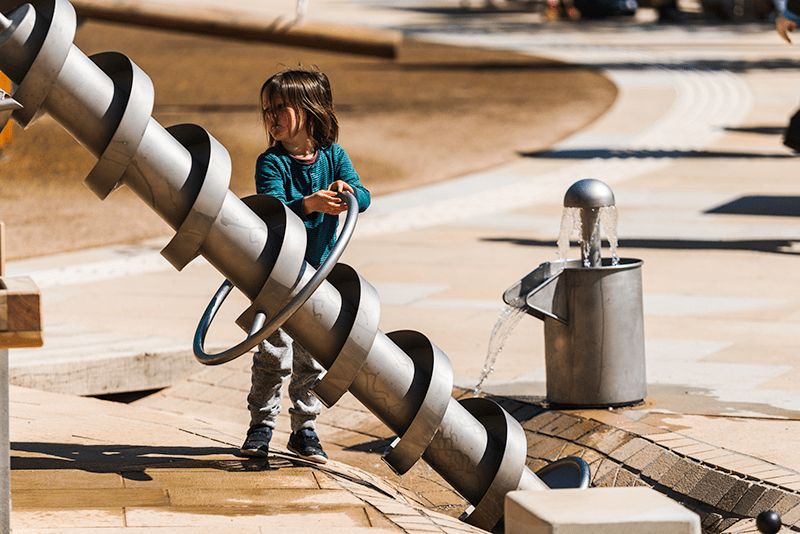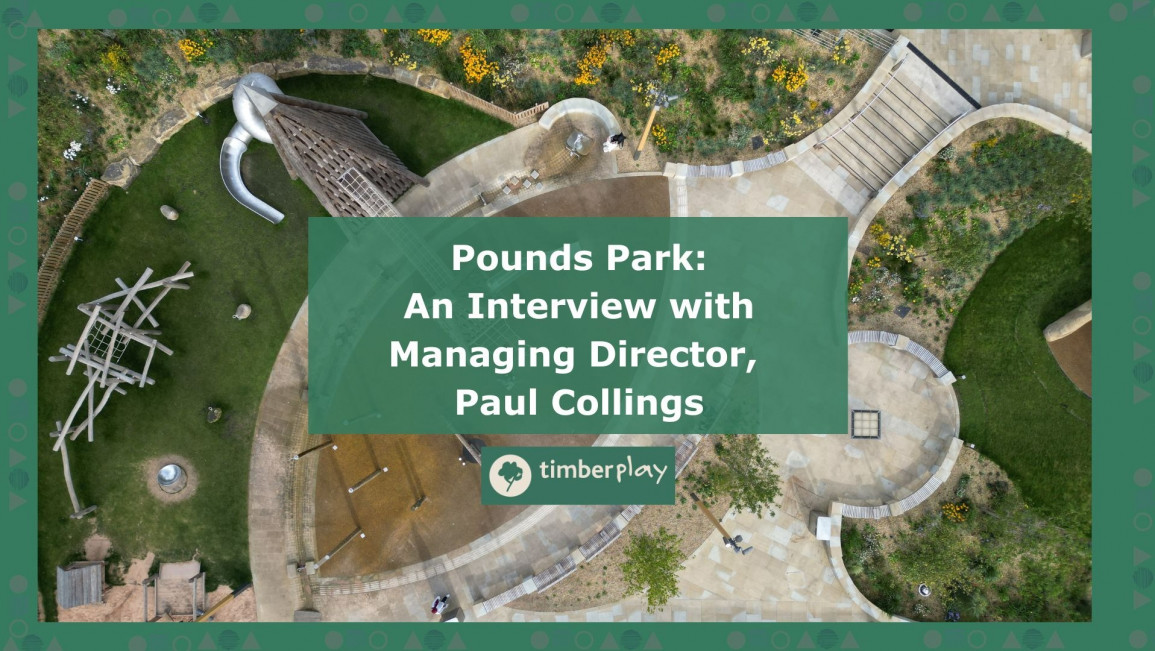Ideas and Insights
Paul Collings, owner of the Create Partnerships group which includes Timberplay, reflects on the changing face of Sheffield City Centre, the progressive city council decision to make play a priority, and what the future might hold for city centres like Sheffield hoping to become more vibrant and community focused places to live and work.
There were a few of us – myself, a Professor of Landscape Architecture and a professor of Play here in Sheffield. We had a vision. To create a different kind of playground in the city. We wanted to create something in one of the less affluent areas of Sheffield, something that would offer children of all ages – teenagers included – a natural play space with a great atmosphere, some risky play, loose materials. Something that would change the tone of what playgrounds could be.
We made progress but in the end there were just too many barriers and we couldn’t get it approved.
But now - nearly 20 years later - Sheffield has something that does all of those things. Back when we were trying to make that happen we never in our wildest dreams have thought that it could be right in the heart of the city centre. But it is, and it’s doing great things for the people who live, work and play here.
I grew up in Sheffield and I live here now and like every other UK city the centre has changed massively. The original heart of the Sheffield city centre was the Castle area, where the actual castle once was. I have strong memories from when I was really young of the vibrant market there, which was full of all these exciting smells and sounds. I remember a really old-fashioned weighing machine which you could sit on and then they’d use brass plates to work out how much you weighed. I loved it.
The market moved to the Sheaf market, and Bank Street, once bustling with retail, is now filled with offices. The "hole in the road" subway system, a unique feature, led to Fargate, which was once a vibrant retail area but is now dominated by charity shops and pop-up stores. These shifts and changes aren’t unique to Sheffield of course. All cities have evolved to reflect changing shopping and working habits, but when it’s your home city you notice more viscerally the impact of those changes in how people move around and engage with the city centre.
Pounds Park
The real heart of the city has moved again in recent years. It’s now close to an area called Pounds Park - named after Sheffield’s first Chief Fire Officer, Superintendent John Charles Pound. There were originally plans for a brand new shiny retail development. But then the pandemic happened – which not only delayed the build but accelerated the flight towards online shopping.

I think if it HAD been built it would now, with hindsight, have just been another struggling retail outlet, but Sheffield City Council made a pretty bold decision to completely rethink how the city centre should be, that it should be a place for people to live. Still a place for people to shop, of course, and a place for nightlife, but it should also be a place for people to live.
There’s much more development to come in the Heart of the City but the playground that we’ve been able to create as part of the council’s wider vision is what I dreamed of helping to create almost 20 years ago. It’s a fantastic playground. It sits well within its environment. It's got challenge in there. It's got great play value. It's got a nice atmosphere. It's beautiful and it's a place where people of all ages – children, parents, grandparents, teenagers, workers on their lunch break - want to be. It’s lit at night which means it becomes part of the way people move around the city in the evening as well as the day and young adults can spend time together there, sitting and chatting.
“If I had a magic wand and could make one change to British playgrounds, I’d get rid of the fences”
Open access city centre playgrounds
A crucial factor in my mind is that it’s not fenced off. If I had a magic wand and could make one change to British playgrounds, I’d get rid of the fences around the vast majority of them. In mainland Europe fences are much less common. Some that are close to very busy roads perhaps need them but other than in those cases I think they’re mostly unnecessary. Fences add to the cost, and they actually diminish the playground. There’s evidence that older children are less likely to use playgrounds if there’s a fence. They see it as a barrier. If you remove it though they will graduate onto that space, use it and get the benefit from it. You get children of different ages playing alongside one another, which we know has huge benefits for a child’s social development. It becomes a welcoming place, a shared space for everyone and so much more part of the wider community.
By installing a fence you’re saying “this is the space for children, rather than everywhere is for everyone”
Early on in my career in play I started campaigning around the fact that playgrounds should be for children. My view is that playgrounds weren't being designed for children, they were being designed around adult anxieties. People were concerned about vandalism and litigation, and dog poo and drug takers and anti-social behaviour. And these are all valid concerns that you might have to think about if you in any kind of public space. But the problem is that all the solutions, or the seeming solutions, detract from what will make that place as good as it possibly can be.
But in this city centre play space in Sheffield you've got something where the city council put those types of concerns to one side and just focused on making it a great place. I think it's amazing that they made the decision to put a playground in the centre of it, and for that to be the starting point of further development of the area. It epitomises the idea that there's a different purpose now to the city centre.
As a report by Arup on children in cities suggests: "The case for shaping planning and urban design around the needs of children is clear. If developments are attractive to children and families, they appeal to all ages, automatically marketing themselves as vibrant, safe, clean places. Developers also realise the economic benefit. When areas provide for everyone, space can be saved. Management costs also tend to fall because the more a public space is used and shared by a community, the more behaviours in public spaces automatically improve!”
Pound’s Park has marked a shift in how we see children in Sheffield and our cities generally. The creation of safe, green and inclusive playful spaces in city centres can have a big impact on social interaction and mental health, as well as attracting business and encouraging a sense of community.
Sheffield isn’t the only northern city bringing a new park and playground into the urban centre. By Piccadilly Station in Manchester Mayfield Park was the city’s first new park in more than 100 years. It is a vast former industrial site turned lush green space. Travel in the other direction from Sheffield and a playground in Nottingham, amid the urban landscape of the Broadmarch redevelopment in the city centre has provided a safe, green, playful space for people to enjoy.
We need a resurgence of retail in our city centres, and hopefully that will come, but creating welcoming and safe areas that encourage people to relax, socialise and play are surely the key to healthier, happier and more vibrant city centres.

Paul Collings is the Managing Director of Timberplay. He started the company from his garage in the year 2000, immersing himself in the fascinating world of play to ensure he was able to offer credible and useful advice to his new and growing client base. Over the years Timberplay has grown under his stewardship. Paul has also developed the Create Partnerships portfolio of brands, including Playgarden, All Urban and Lightmain.
